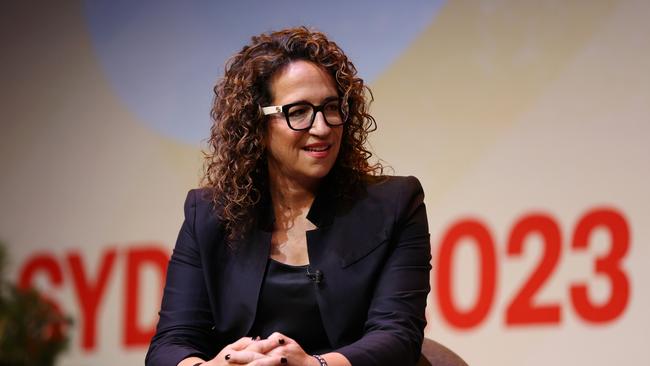Forget virtual and augmented, diminished reality is far scarier
US futurist Amy Webb on a world in which technology can remove sounds and people in real time.

Futurists are concerned about a world in which technology is used in real time to remove things from our environment via worn devices that can manipulate our senses.
While much of the world talks with excitement about virtual reality – simulated digital worlds in which users can visit by wearing VR glasses – and augmented reality – digital items projected into an environment usually via special glasses or through a mobile lens – another form of reality with the ability to do much greater harm garners far less attention.
“There’s something called diminished reality that almost nobody talks about. And that is, in real time, taking something away,” explains US quantitative futurist Amy Webb.
Speaking to The Australian at South by Southwest in Sydney this week, Ms Webb said that diminished reality technology has the ability to “materially change” how people see and interact with the world. “We all have access to that (technology) now through noise cancelling headphones,” she said.
Ms Webb, who is also an author, a professor at New York University, the chief executive of the Future Today Institute and on the global risk advisory board of the World Economic Forum, delivered the opening keynote at the US festival as it launched for the first time in Australia on Monday.
The use of diminished reality technologies are not limited to wearable devices but could also be used within confined spaces.
One example exists in buildings. “Some researchers in Singapore are developing technology that we don’t have to have on our body as a way of changing the signal input in the world around us,” Ms Webb said. “If you have that in windows, suddenly you’ve got buildings that are quite quiet on the inside.”
The technology used in noise-cancellation earphones or those windows is called anti-wave and it works by reducing sounds by using additional sound to cancel it out. The idea was first conceptualised in the 1930s.
That technology isn’t beneficial to all, with some audiology experts finding that people who over-rely on balance organs in the ear to orient themselves end up swaying in the air, feeling nauseous or even disoriented when using noise cancellation devices.
Just as augmented reality is able to add items into our environment via special glasses, the same technology could be equally used to remove certain things.
Ms Webb said she envisions a future in which diminished reality technology could be used to limit exposure to certain colours, items or even people. However, it would more likely be used to label people or certain races or gender, she said.
“To me, that seems to fit more of a profile that society is heading in; (asking technology) to show them how to identify somebody they don’t like versus removing the person,” she said.
Technologies which alter our environments and how we’re seen or viewed digitally have long been popular on online streaming platforms in the shape of filters and are increasingly growing on video messenger platforms in a post-Covid Zoom-heavy work environment.
Cameras which can, using artificial intelligence, portray a presenter as if they’re looking at a camera when in fact their looking elsewhere or at a script are already on the market.
“The level of digital mediation has gotten very intense, but it’s emerged in this sort of frictionless way that makes things a little easier for people,” Ms Webb said.
“A couple of years from now, people will look back at all of these images that they’ve taken, none of which represent reality as it was at that point.
“Maybe we will have slightly different, slightly better versions of photos, but it also changes our interpretation of that moment we were living through.”
Another concept which could find the use of diminished reality technology are in-ear translation devices. “If you think about the way that we communicate, there’s so much else that goes into what we’re saying that’s non-verbal. That can be tone, or gesture or context,” Ms Webb said.







To join the conversation, please log in. Don't have an account? Register
Join the conversation, you are commenting as Logout